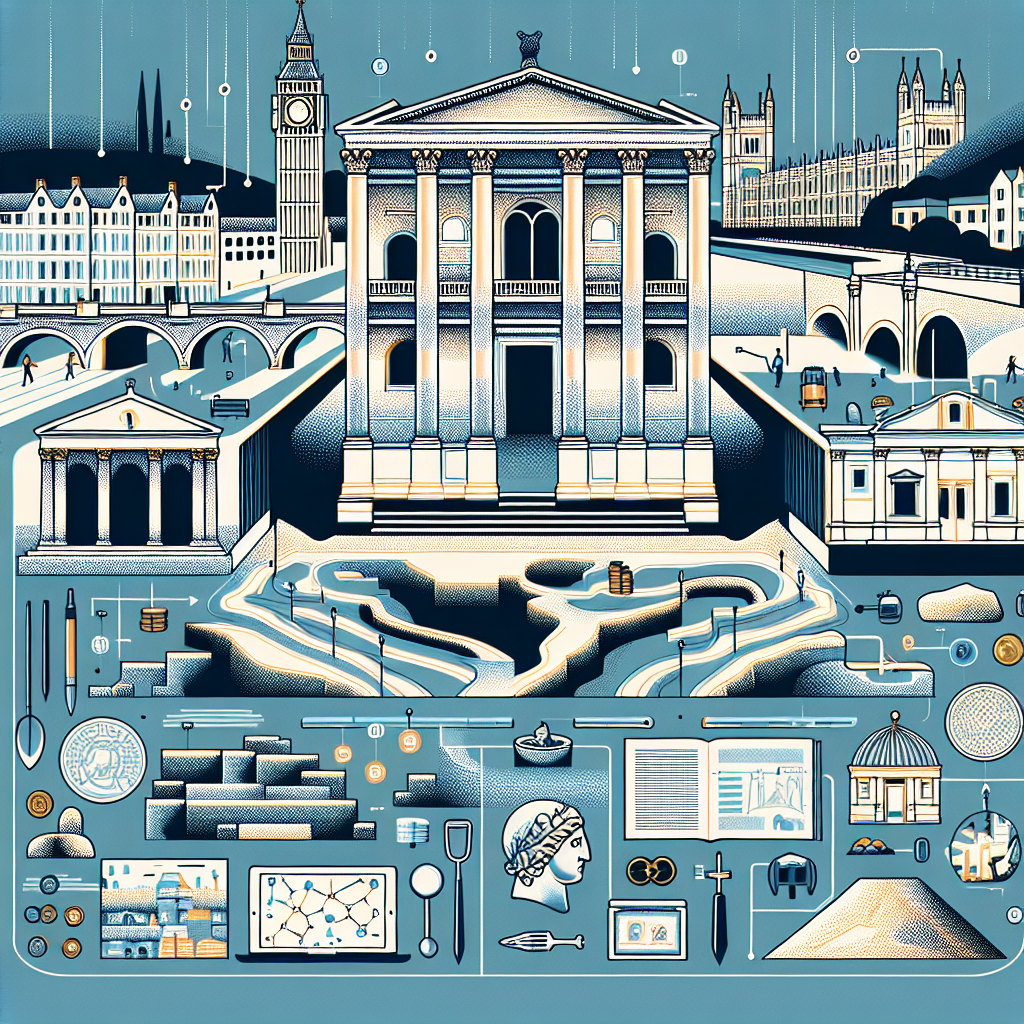London's Ancient Roman Basilica Discovered

Introduction: A Window into Ancient Londinium
Archaeologists in London have made a groundbreaking discovery that is poised to rewrite a chapter of the city’s history. Beneath the modern façade of an unassuming office block near Leadenhall Market, the remains of London’s first Roman basilica have been uncovered. This 2,000-year-old edifice, once the epicenter of political and social discourse, offers a unique glimpse into the life and times of ancient Londinium, a key city following the Roman invasion.
The Discovery: Uncovering a Hidden Past
The basilica, originally a two-storey structure built in the late 70s or 80s AD, lay hidden under the contemporary cityscape for nearly two millennia. Its excavation began after planning permission was granted for a new development on the site at 85 Gracechurch Street. What was once an urgent archaeological investigation has now evolved into one of the most significant discoveries in London’s recent history.
Historical Context: The Rise of Roman Londinium
The Roman basilica was central to the administrative, judicial, and social life of Londinium. After the Roman invasion, the newly established City of London quickly transformed into a bustling hub of trade and governance. The basilica itself served as a courtroom, a forum for public assemblies, and a meeting place for local magistrates and politicians.
- Foundation in History: Built just a few decades after the Roman conquest, the structure highlights the rapid Romanization of Britain.
- Architectural Significance: At its peak, it was the largest building of its kind north of the Alps, showcasing the importance of Londinium within the empire.
- Political Hub: The discovery of the Tribunal area, where magistrates once dictated the fate of the city, emphasizes the basilica's role in governance.
Archaeological Techniques and Findings
Modern archaeological methods have played a vital role in this discovery. Experts from the Museum of London Archaeology (MOLA) employed sophisticated techniques to remove layers of modern construction and reveal ancient foundations. During the excavation, remnants of flint, Kentish ragstone, mortar, and Roman tiles were exposed, displaying extraordinary levels of preservation.
The discovery team focused on several key areas:
- Foundation Analysis: Traces of the basilica’s original foundations were uncovered, including evidence of the raised Tribunal platform.
- Structural Remains: Parts of the wall, some extending over 32 feet, provide insights into construction techniques and materials used by Roman builders.
- Artefact Recovery: Items such as a roof tile with the imprint of a Roman official and even the finger marks of its maker have been recovered, offering a tangible connection to the past.
These scientific and systematic methods have not only confirmed the basilica’s existence but also provided a detailed look at its construction and function within Roman society.
Significance in the Modern Era
The unveiling of London’s first Roman basilica is more than just an archaeological milestone; it serves as an essential link between the ancient and modern worlds. For historians, archaeologists, and the general public alike, this discovery is a portal to understanding the evolution of urban life in one of the world's most dynamic cities.
Why is this discovery so pivotal?
- Cultural Heritage: It connects contemporary London with its ancient Roman roots, emphasizing a continuous narrative of urban development.
- Educational Value: The site will eventually provide scholars and students with a tangible example of early civic planning and architectural practices from the Roman era.
- Tourism and Public Engagement: Once the findings are exhibited, this hidden basilica will become a significant attraction, fostering a deeper appreciation for London’s layered history.
Expert Opinions and Future Prospects
Sophie Jackson, the director of development at MOLA, stated, "It’s like discovering the Speaker’s Chair and chamber of the House of Commons 2,000 years into the future." Experts are thrilled at the prospect of this site becoming a permanent public exhibit, which could potentially transform the way residents and visitors connect with the past.
Plans for a public display include not only the preservation of the basilica’s ruins but also the creation of an exhibition space that will allow the public to experience what it once meant to serve as the stage for ancient Roman life. This initiative is expected to bring together the expertise of historians, archaeologists, and urban developers to craft an interactive, educational experience that revives ancient history in a modern setting.
The Broader Impact on Archaeology and Urban Studies
London’s urban landscape is a testament to layers of history that lie beneath its streets. The discovery of the first Roman basilica reinforces the idea that modern infrastructure often coexists with ancient remnants. This find will likely spark further investigations into other sections of the city, potentially revealing additional remnants of Londinium.
From an academic perspective, the basilica provides a rich case study in:
- Urban Evolution: How ancient infrastructures influence the growth and design of modern cities.
- Preservation Techniques: New methodologies for preserving fragile archaeological sites in urban environments.
- Cultural Continuity: Understanding how historical narratives are preserved and communicated through concrete remains and artefacts.
Detailed Timeline of Roman Influence in Britain
To put this discovery into context, it is important to understand the timeline of Roman influence in Britain. Key events include:
- AD 43: The Romans invade Britain, marking the inception of Londinium as a strategic settlement.
- AD 70-80: Construction of the basilica begins shortly after the establishment of Roman control, indicating rapid development.
- AD 120s: The site evolves with the construction of newer public forums, relegating the original basilica to historical significance.
- AD 410: The Roman occupation ends, but the architectural and cultural imprints remain, influencing medieval London.
This timeline illustrates not only the relative brevity of the basilica’s active use but also its historical prominence during the early years of Roman Britain.
Public Exhibition: A Glimpse into the Past
The future exhibition of the basilica’s remains is anticipated to create an immersive historical experience. Scheduled to open to the public around 2029 or 2030, the exhibition will allow visitors to stand where Roman officials once deliberated and witness the architectural brilliance of ancient engineering.
The planned exhibition space will combine interactive displays, digital reconstructions, and possibly augmented reality experiences that provide contextual insights into daily life in ancient Londinium. This initiative is an ambitious step towards integrating archaeology with modern public engagement, ensuring that the cultural legacy of ancient Rome continues to educate and inspire.
Conclusion: Bridging Two Millennia
London’s discovery of its first Roman basilica is a poignant reminder of the enduring legacy of the past. As archaeologists peel back the layers of modern construction to reveal remnants of a bygone era, the profound connection between ancient and contemporary urban life becomes increasingly evident.
This remarkable find is not only a treasure trove for historians and archaeologists but also serves as an inspirational narrative that underscores the dynamic evolution of cities. The basilica stands as a symbol of resilience and continuity, connecting the lives of those in ancient Londinium with the modern pulse of London today.
In the coming years, as further excavations and research continue, we can expect more astonishing revelations that will deepen our understanding of the intricate tapestry of London’s history. For anyone passionate about archaeology, urban development, and the preservation of cultural heritage, the story of London’s first Roman basilica is a compelling reminder of how the past continually shapes our future.



Comments ()